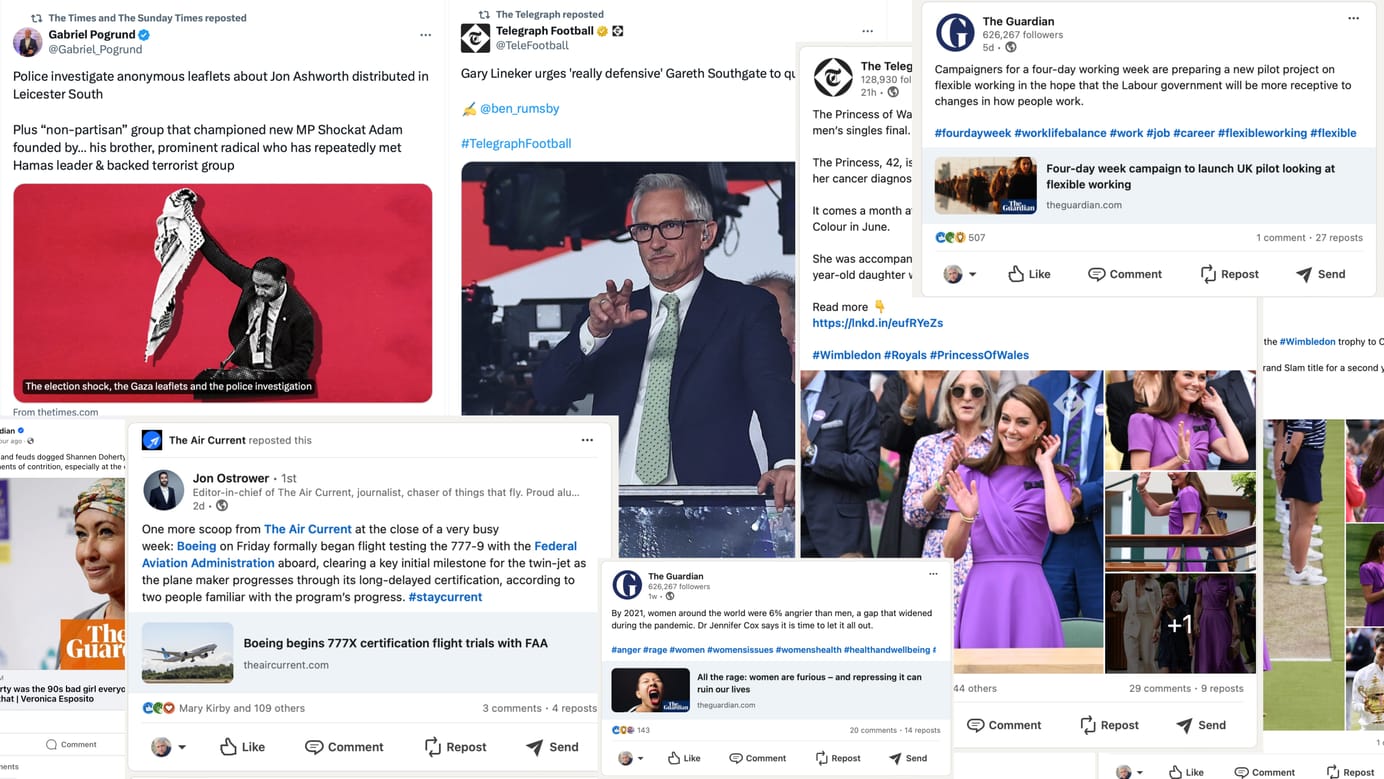
Getting tone of voice right on social media
Being able to talk like the people you want to reach is a critical audience engagement skill.
There was an odd piece on Vice a couple of weeks ago, that claimed to explain why tabloids talk so weirdly on social media. It doesn’t, really. It gives the author’s opinion on why they do it, which is tangled up in a critique of previous poor behaviour from tabloids:
Nowadays, rather than explicit judgment, the tabloids now exercise a weird distance from their own content. Rather than calling a woman “fat”, the Daily Mail will say she “nearly spills” from her outfit. Instead of actually stating the house stance that women are immoral for getting plastic surgery, the tabloids post on social media about how “UNRECOGNISABLE” they are afterwards. “She looks so different!” the social posts read. It’s a type of plausible deniability, like a written-down version of a bitchy comment from an aunt, where nothing nasty is actually said, but the intent is clear: “You’re wearing that, are you?”
A more honest headline on the piece would have been “Why I find the chatty tone of tabloids on social media uncomfortable based on their historical record of problematic attitudes”. But that won’t generate the same sort of click-through from social, will it? 😇
And, in fact, the piece doesn’t actually answer the question as to why they adopt this tone — because, knowing several people who work on, or who have worked on, social desks at the tabloids, they’re not doing it just to disguise some judgemental agenda, even if that might well still exist at the title as part of their editorial ethos.
There’s a short answer and a longer answer to why they really do it.
The short answer
They’re doing it because it works.
The longer answer
It works because tone of voice matters on social media. Remember, most people are on these platforms to interact with friends, family, contacts, or acquaintances. They may follow brands and influencers, but they’re there to interact with other people — and often people they actually know.
If you interrupt people’s scrolling experience with something that isn’t particularly human voice, they’ll keep on scrolling and just skip your post. It reads to them — at best — like an advert, and at worst like something irrelevant to their lives. We’ve seen this as a pattern again and again. It applies to Stories, too. Make them too slick, and people just swipe past them because they feel like adverts, not genuine content from other people.
You have to match your voice on social media to the voice of the people you’re trying to reach. As Lauren puts it in that Vice piece:
There is, undoubtedly, something a bit off about it: the way the posts sound like they were written by a bot programmed with posts from the internet profiles of white Facebook mums and former Love Island contestants; the casual attempt at ordinary social media performance; …
So… they’ve matched the voice of the target audience? That’s their job.
In essence, the key part of this story is not that the social media accounts of the tabloids match the voice of their target audience. That’s just good Audience Engagement discipline. It’s that the author thinks that the tabloids are historically and currently bad, and that them talking like ordinary users doesn’t sit right with her. And that’s fair comment. This is squarely an opinion piece, which makes no attempt to explore the issue beyond the writer’s hot take on it. No social media experts or researchers were consulted in the preparation of that story.
Focus on tone of voice
However, there’s a reason that the students on one of the modules I teach at City are asked to focus on tone of voice in their work, and provide evidence of that. The ability to switch registers and tones is important if you want to work in this field. I have one former student who has worked at Mail Online, The Economist, the Evening Standard, The Telegraph and the New Statesman. These are clearly publications with very different readerships and therefore need very different tones of voice in their social media profiles.
You’re likely to adopt a very different tone for register if you work on a national newspaper, instead of a consumer mag, or a B2B site. For the latter, you’re likely to be posting with a tone more akin to someone chatting to colleagues over a coffee. For the former, you want a tone of voice akin to the people you want to read your stuff. Even within a political spectrum, you’d expect a different tone of voice from The Telegraph and The Express.
Being human
Talking like a human being is a critical skill to using social media — and one that journalists and marketeers are not always good at. Sometimes the way we are trained encourages us to remove human voice in our work — and then we come across as uncomfortable and stiff when we try to put it back.
But talking like the kind of human being you’re trying to reach is also a critical skill. You might not like what the tabloids produce — but there’s no doubt most of them are good at it. A quick glance at the Facebook pages of The Sun and Vice today and some back of the envelop maths shows an average engagement somewhat higher for the tabloid than for Vice.
Tone of voice matters. And finding the right one is a skill.
Update: not just the tabloids
Amusingly, I logged into Facebook not long after posting this, and near the top of my feed was this post, which proves that this chummy/Facebook Mum tone of voice is far from exclusive to the tabloids:

Although, this is really just an excuse to stick the late Nicholas Courtney on my blog. A vital part of classic Doctor Who.
Sign up for e-mail updates
Join the newsletter to receive the latest posts in your inbox.










